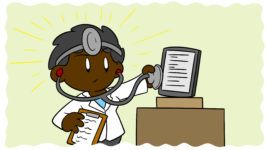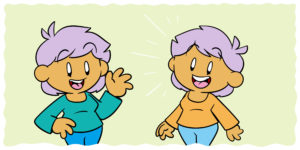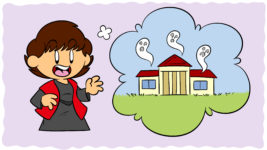If you’ve ever been in an artisanal bakery, you know the feeling. Inviting smells, brown paper packages tied up with twine, cherry tarts and cracked crusty breads… It all adds up to the impression that everything is exactly as the baker would have it. How different from a bag of pre-sliced Wonder Bread on a crowded grocery store aisle; that sad loaf of starch and preservatives doesn’t even have a baker.
Which loaf of bread do you want your book to be?
If it’s the hand-kneaded, aromatic, lovingly crafted artisan loaf, you’ll want to dive into today’s article: a look at what author Guy Kawasaki calls ‘artisan publishing’ and how it can serve you.
It all starts with the right ingredients
Kawasaki’s 2012 co-project with Shawn Welch, APE: Author, Publisher, Entrepreneur. How to Publish a Book calls today’s authors to wear three hats: author, publisher, and entrepreneur.
Our duty to the first and most obvious of these roles – author – means acting as an artist. Kawasaki is adamant on this point: don’t publish crap. It’s wrong. People who think they can publish a book to make money or get famous aren’t being honest with their potential readers, and they aren’t being true to themselves. Every book ever published should add value.
This is not the time to start thinking of all the published books that don’t add value (though I’ll concede that examples abound), or judging what value means to individual people. It is the time for each author to look at their work and their work only and ask, ‘Is this my very best? If somebody else wrote this, would I love it?’
So your first task as an artisanal author is to write something worthwhile, then ‘grind, buff, and polish’ it into something amazing. Your next job is to get somebody else to edit it.
Science tells us that the human eye skims over information for the sake of efficiency, filling in the gaps with what we already know so that we don’t have to process data that we’re already familiar with. They’ve tested this in many ways, including having people read paragraphs where all of the words are scrambled but the first and last letter of each word was in place. People were able to read the scrambled passages with the same fluency as the unscrambled passages.
What does this have to do with editing? An author’s own data is already too familiar. By the end of the writing/self-editing process, they are biologically incapable of processing discrepancies. Their eyes and brains fill in the gaps that an unfamiliar third party will readily notice and correct. ‘Don’t kid yourself,’ Kawasaki warns, ‘a good editor will make your book better.’
Writers love words, as long as those words aren’t ‘marketing’ or ‘entrepreneurship,’ which tend to make us cringe and hide in a corner. But Kawasaki’s onto something: to make it in today’s highly competitive publishing market, an author must be more than an author.
A successful self-publisher must fill three roles: Author, Publisher, and Entrepreneur – or APE.
– Guy Kawasaki, APE: Author, Publisher, Entrepreneur. How to Publish a Book
If you don’t sell the bread, who will eat it?
There are advantages to traditional publishing routes, but Kawasaki recognizes an important benefit to self-publishing: total control of your project. In an interview following the publication of APE, he explains:
I decided to self-publish because I wanted total control over the marketing and selling of my books – particularly in the ebook format. Traditional publishers cannot handle sales directly to customers, sponsorships, and site licenses.
Total control sounds nice, but doesn’t a publisher lend some credibility to your book? Not necessarily. The publisher of Kawasaki’s 2001 Enchantment was unable to fill an order for 500 ebooks. Not very professional.
Moreover, in this same interview, Kawasaki celebrates the fact that self-publication no longer carries the same stigma it once did. As Kawasaki points out, nobody would ask an artisanal baker if he sells his own bread because it wasn’t good enough for Hostess. Much to the contrary, artisans sell their own product because they care about it more than the mass publishers possibly could. It is made with more care and better ingredients, and it is packaged the way the baker/writer wants it from start to finish.
That isn’t to say that mass food producers don’t offer products that we appreciate (or at least consume despite ourselves), or that mass publishers don’t put out books that we enjoy – but the comparison helps us realize how absurd it is to judge a book simply by virtue of the fact that it’s self-published. Fortunately, the stigma is dissipating as the internet increasingly compels people to trust reviews over publisher reputations.
When writers as accomplished as Kawasaki are self-publishing, that also puts the kibosh on the notion that publishers are for real authors and DIY is for people who couldn’t get a real publisher.
Though publishing can only come after writing, don’t delay researching the publication process until after the book is complete. By the time you’re done writing, know your plan for publishing. This ensures the bread is fresh, so to speak, and it helps prevent you from procrastinating.
How can you sell the bread if no-one knows about it?
Another thing that you should be working on while you’re writing the book is branding yourself. People are often (understandably) reticent to self-brand. It’s a bit unnerving, feels self-inflating, and frankly most writers would rather curl up with an antique hardback copy and a cup of chamomile than Google ‘internet marketing for authors’ any day.
But in a flooded market, it more than helps to stand out: it is imperative. Failure to brand yourself as an author is like taking a loaf of bread to a gluten-free convention and neglecting to tell the participants that your bread is not only delicious but also, fortunately, gluten-free. They wanted the bread, but you held back the necessary information, so everybody lost out.
When readers know what to expect from you, and when your books are never less than amazing, you’ll have their loyalty for life. Even if you don’t plan to write more than one book, branding is how people in the internet age recognize each other. It’s how they make decisions. People like to know what to expect. Tell them what to expect, and if your book is what they’re looking for, chances are they’ll give it a try.
As much as some authors feel intimidated by the prospect of marketing, Kawasaki reminds us that nobody cares about marketing an author’s book as much as the author does.
Whitman, for example, self-published (and typeset!) Leaves of Grass. Self-publishing could change from stigma to bragging point – maybe we could change the term to ‘artisanal publishing’ and foster the image of authors lovingly crafting their books with total control over the process.
One of many examples where control might be a major asset is disclosed in the abovementioned interview that Kawasaki gave shortly after the release of APE. Having already built up his brand, Kawasaki was able to over a review copy of the book to nearly four million social media followers. Before the book was even released, 1100 people had read it. Within six days of its release, a tenth of those readers had left five-star reviews. ‘No traditional publisher,’ Kawasaki concludes, ‘would let its author do something like this.’
Considering the artisan’s way
Back to our imaginary baker friend. She finishes her latest creation – a perfectly browned, seedy caraway-rye round loaf, hot out of a Dutch oven. She takes it to a food supplier and asks, ‘Can you sell this for me?’ After taking a taste, the supplier replies, ‘Sure, it’s good, I think people will like it. I’ll put it on the shelf and as long as it makes me a little money I’ll leave it there.’
That’s fair enough. The supplier has hundreds of other products to keep track of and sell. If people aren’t buying the baker’s rye, the supplier can’t afford to beg them to. He may also not love the idea of handing out a thousand free loaves for review before the rest of the bread hits the shelves. The artisan baker knows this, and shapes the route her bread will take from field to oven to mouth.
This is your potential relationship to your book. You are its master craftsman from start to end. You may decide to forgo some of that control for a number of perfectly valid reasons. Just don’t let the self-publishing stigma, fast-fading on the horizon, be one of them. No matter who publishes your book, you are an artist. Live up to that name.
What makes your process artisan? Let me know in the comments, and check out How To Make A Living As A Self-Published Writer and 40 Exercises And Resources Every Author Needs for more great advice.





